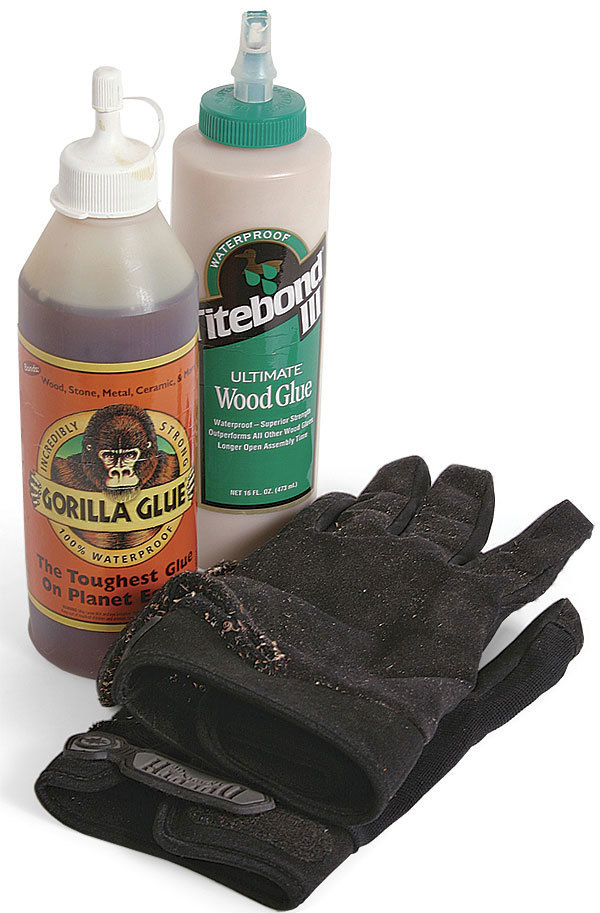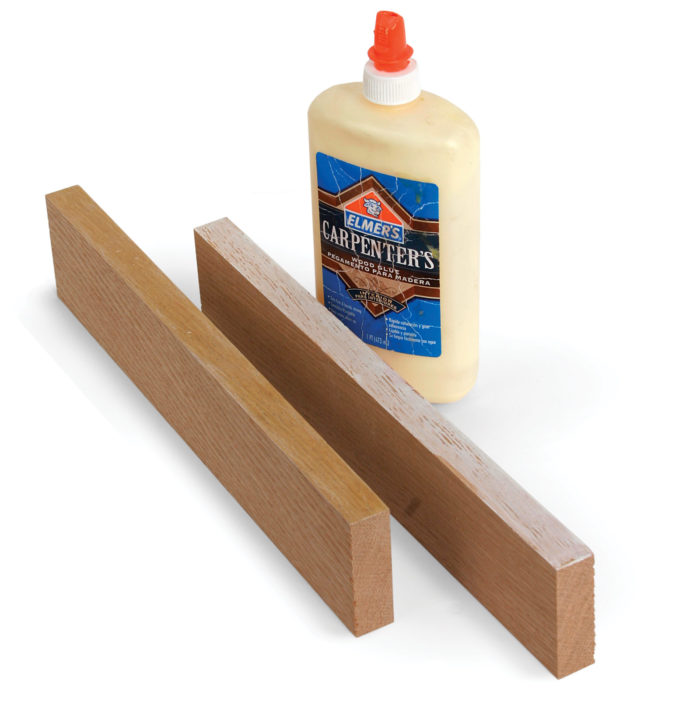Wood glue is a handy adhesive that can be used for a variety of woodworking projects. But have you ever wondered how cold temperatures might affect its effectiveness? In this article, we’ll explore the question, “How cold can you use wood glue?” and provide you with all the information you need to know. So grab a cup of hot cocoa and let’s dive in!
When it comes to using wood glue in colder temperatures, there are a few things to consider. Different types of wood glue have different temperature ranges for optimal performance. Some wood glues are specifically designed to withstand lower temperatures, making them ideal for cold weather projects. Others may not hold up as well in colder environments, potentially compromising the integrity of your project.
So, how cold is too cold for wood glue? While the exact temperature limit may vary depending on the brand and type of wood glue you’re using, a general rule of thumb is to avoid using it when the temperature drops below 50 degrees Fahrenheit (10 degrees Celsius). At lower temperatures, the glue may not cure properly, resulting in weak bond strength and potential project failure.
Now that we have a better understanding of the temperature range for using wood glue, let’s explore some tips and tricks to ensure successful bonding in colder weather. By following these guidelines and choosing the right type of wood glue for your project, you can confidently tackle woodworking even when the temperature drops.

How Cold Can You Use Wood Glue?
Wood glue is a versatile adhesive that is commonly used in woodworking projects. It provides a strong bond between wood surfaces, making it ideal for joining pieces together. However, there are certain temperature limitations when it comes to using wood glue. In this article, we will explore the effects of cold temperatures on wood glue and provide some insights on how to properly use it in colder conditions.
Understanding the Effects of Cold Temperatures on Wood Glue
When exposed to cold temperatures, wood glue can experience changes in its viscosity and bonding properties. The cold temperature can cause the glue to become thicker and more difficult to spread evenly. This can lead to uneven bonding and weaker joints. Additionally, the colder temperature can slow down the curing process of the glue, resulting in longer drying times. It is important to understand these effects and take appropriate measures when using wood glue in cold conditions.
Effect of Cold Temperatures on Viscosity
The viscosity of wood glue refers to its thickness or flowability. When exposed to cold temperatures, wood glue tends to become thicker and more viscous. This is because the coldness slows down the movement of the molecules within the glue, causing it to flow less freely. As a result, it becomes challenging to spread the glue evenly on the wood surfaces. To overcome this, it is recommended to bring the glue and the surfaces to be bonded to room temperature before application. This will help maintain the appropriate viscosity and ensure better bonding.
Another way to address the issue of viscosity in cold temperatures is to warm up the wood glue slightly. This can be done by placing the glue container in a warm water bath for a few minutes. However, it is crucial to avoid overheating the glue as it can affect its performance. It is always recommended to follow the manufacturer’s instructions for the specific wood glue being used.
Effect of Cold Temperatures on Bonding
In addition to the viscosity, cold temperatures can also affect the bonding properties of wood glue. As the glue becomes thicker, it may not penetrate the wood fibers as effectively, resulting in weaker bonds. To address this, it is important to ensure proper clamping pressure when joining the wood pieces together. Applying adequate pressure helps to squeeze out any excess glue and ensures maximum contact between the surfaces. This is especially crucial in colder temperatures when the glue is less flowable.
Furthermore, it is advisable to allow for longer drying times when using wood glue in cold conditions. The colder temperatures can slow down the curing process, making it necessary to provide ample time for the glue to fully dry and set. Rushing the drying process can compromise the bond strength and lead to weaker joints. It is best to consult the manufacturer’s guidelines for the recommended drying times at different temperatures.
Additional Tips for Using Wood Glue in Cold Temperatures
Here are some additional tips to keep in mind when using wood glue in cold temperatures:
- Store the wood glue in a controlled environment to prevent exposure to extreme cold temperatures.
- Bring the glue and the surfaces to be bonded to room temperature before application.
- Ensure proper clamping pressure to maximize bonding in colder temperatures.
- Allow for longer drying times to ensure the glue fully sets.
- Consider using a glue with a shorter curing time or a specific formulation designed for colder temperatures.
The Benefits of Using Wood Glue in Cold Conditions
While using wood glue in cold conditions can present some challenges, it also offers certain benefits. The slower drying time in colder temperatures allows for more time to adjust and align the wood pieces before the glue sets. It can be especially advantageous when working on complex or large-scale projects. Additionally, the thicker consistency of the glue in cold temperatures can provide enhanced gap-filling properties, resulting in stronger joints.
Conclusion
Wood glue can be used in colder temperatures, but it requires some adjustments to ensure optimal bonding. By understanding the effects of cold temperatures on wood glue and following the recommended tips, you can achieve strong and durable bonds even in chilly conditions. Remember to bring the glue and surfaces to room temperature, apply proper clamping pressure, and allow for sufficient drying time. With these considerations in mind, you can confidently use wood glue in a variety of woodworking projects, regardless of the outdoor temperature.
Key Takeaways: How Cold Can You Use Wood Glue?
- 1. Wood glue should not be used below freezing temperatures.
- 2. Most wood glues have a minimum temperature range of 40-50°F.
- 3. Cold temperatures can affect the curing process of wood glue.
- 4. It is recommended to store wood glue at room temperature.
- 5. If necessary, warm up the glue and surfaces before applying in cold weather.
Frequently Asked Questions
Curious about the limits of using wood glue in cold temperatures? Check out these five engaging Q&A pairs that shed light on “how cold can you use wood glue?”
Question 1: Can I use wood glue in freezing temperatures?
Answer: It’s generally not recommended to use wood glue in freezing temperatures. Cold temperatures can hinder the glue’s ability to bond effectively. Most wood glues require optimal temperature conditions (around 50°F to 70°F) for proper curing and bonding. Freezing temperatures can cause the glue to become brittle and weaken the bond, leading to potential failure.
However, there are specialized wood glues available that are formulated to withstand lower temperatures. These glues are designed to cure and bond effectively in colder conditions. If you need to use wood glue in freezing temperatures, look for a product specifically labeled as suitable for cold weather applications.
Question 2: What happens if I use wood glue in extremely cold temperatures?
Answer: Using wood glue in extremely cold temperatures can have adverse effects on the bond. The cold temperature can cause the glue to take longer to cure, or it may not cure properly at all. The glue may become brittle and fail to create a strong, lasting bond. Additionally, moisture in the wood and the glue may freeze, resulting in a weakened bond.
It’s important to consider the temperature guidelines provided by the manufacturer of the wood glue you’re using. Following these guidelines will help ensure that the glue cures properly and creates a strong bond between the wood surfaces.
Question 3: What is the minimum temperature I can use wood glue?
Answer: The minimum temperature for using wood glue depends on the specific product you’re using. Most wood glues have a minimum application temperature listed on the label or in the product instructions. Typically, this temperature ranges from 40°F to 50°F.
Using wood glue below its recommended minimum temperature can result in poor bonding and longer curing times. It’s essential to follow the manufacturer’s instructions to achieve the best results. If you’re working in a colder environment, consider using a specialized wood glue formulated for lower temperatures.
Question 4: Can I warm up wood glue to use it in colder temperatures?
Answer: It’s not recommended to warm up wood glue to use it in colder temperatures. Altering the temperature of wood glue can affect its chemical composition and reduce its effectiveness. Heating up the glue may disrupt the curing process, leading to weak bonds or failure to bond at all.
If you need to use wood glue in colder temperatures, it’s better to use a product specifically designed for such conditions. These specialized wood glues are formulated to perform well in low temperatures and can provide better bonding results than attempting to warm up regular wood glue.
Question 5: Are there alternatives to wood glue for cold weather applications?
Answer: Yes, there are alternatives to wood glue for cold weather applications. One popular alternative is polyurethane glue, which can perform well in a wider temperature range compared to traditional wood glues. Polyurethane glue cures through a reaction with moisture, making it less sensitive to cold temperatures.
Another option is epoxy adhesive. Epoxy adhesives are known for their strong bonding capabilities and can often tolerate colder temperatures. However, it’s important to read the manufacturer’s instructions and guidelines to ensure proper use and effectiveness in specific temperature conditions.

Cold temperatures affect the strength of your glue. #woodwork #woodglue #titebond
Summary
Wood glue can be used in cold temperatures, but it may take longer to dry. It’s best to follow the manufacturer’s instructions for the specific glue you are using. Keep in mind that colder temperatures can affect the strength and quality of the bond, so it’s important to consider the temperature conditions before using wood glue.
Wood glue works by creating a strong bond between two pieces of wood, and it is commonly used in woodworking projects. While it can work in colder temperatures, it’s important to remember that it may take longer to dry. In colder conditions, it’s a good idea to allow extra drying time and ensure that the glue is set and fully cured before putting any stress on the bond. Overall, using wood glue in colder temperatures is possible, but it’s important to be mindful of the potential challenges and adjust your expectations accordingly.
